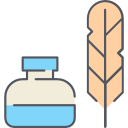
Skripsi
ANALISIS CEMARAN LOGAM BERAT TIMBAL PADA BUAH JERUK KEPROK BRASTAGI DI PASAR KM 5 KOTA PALEMBANG
Penilaian
0,0
dari 5Lead heavy metal contamination occurs in Brastagi Tangerine Fruit through environmental media such as air. Lead exposure is toxic to the human body and may cause various health disorders. This study aimed to analyze the sources of lead contamination, selling conditions, contamination control behavior, and the handling and storage facilities of Brastagi Tangerine Fruit at KM 5 Market, Palembang City. This research used a qualitative method with a descriptive approach and laboratory testing using Atomic Absorption Spectrophotometry (AAS). Data were collected through in-depth interviews with five informants and analysis of four orange samples, consisting of peel and flesh, obtained from vendors in the front and back areas of the KM 5 Market. The results showed that the sources of lead contamination came from open transportation and handling containers, as well as selling locations exposed to vehicle pollution. Exposure was higher at the front area of the market, as confirmed by laboratory results showing lead levels in Brastagi Tangerine Fruit peel at 0.018 mg/kg and flesh at 0.014 mg/kg, compared to the back area with peel at 0.009 mg/kg and flesh at 0.006 mg/kg. However, these levels were still below the maximum threshold set by the 2009 Indonesian National Standard (SNI). Vendors had not implemented contamination control practices such as fruit washing or protective packaging during storage. It is concluded that lead contamination was caused by open facilities and exposure to vehicle pollution at KM 5 Market, Palembang. It is advisable to store fruit in closed containers and avoid leaving it exposed in areas near the roadside.
Availability
| Inventory Code | Barcode | Call Number | Location | Status |
|---|---|---|---|---|
| 2507005455 | T178974 | T1789742025 | Central Library (Referensi) | Available but not for loan - Not for Loan |
Detail Information
- Series Title
-
-
- Call Number
-
T1789742025
- Publisher
- Inderalaya : Prodi Gizi, Fakultas Kesehatan Masyarakat Universitas Sriwijaya., 2025
- Collation
-
xxii, 549 hlm.; ilus.; tab.; 29 cm.
- Language
-
Indonesia
- ISBN/ISSN
-
-
- Classification
-
612.307
- Content Type
-
Text
- Media Type
-
-
- Carrier Type
-
-
- Edition
-
-
- Subject(s)
- Specific Detail Info
-
-
- Statement of Responsibility
-
SEPTA
Other version/related
No other version available
File Attachment
Comments
You must be logged in to post a comment
 Computer Science, Information & General Works
Computer Science, Information & General Works  Philosophy & Psychology
Philosophy & Psychology  Religion
Religion  Social Sciences
Social Sciences  Language
Language  Pure Science
Pure Science  Applied Sciences
Applied Sciences  Art & Recreation
Art & Recreation  Literature
Literature  History & Geography
History & Geography